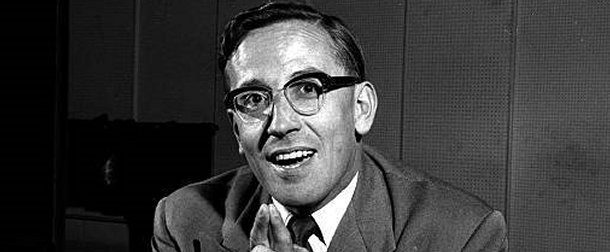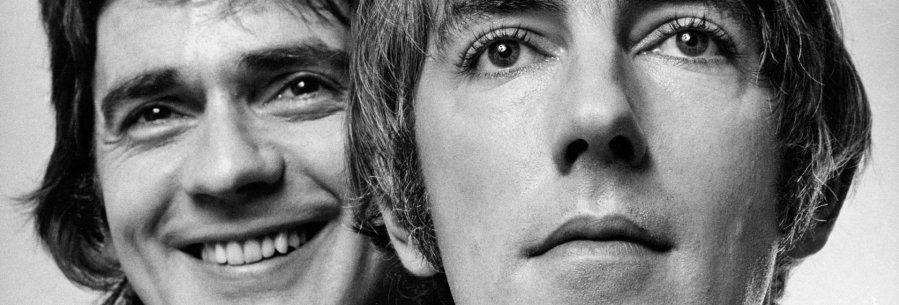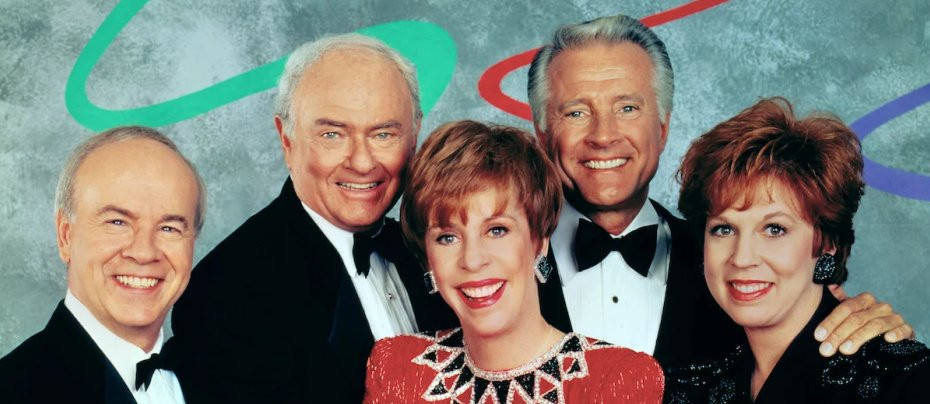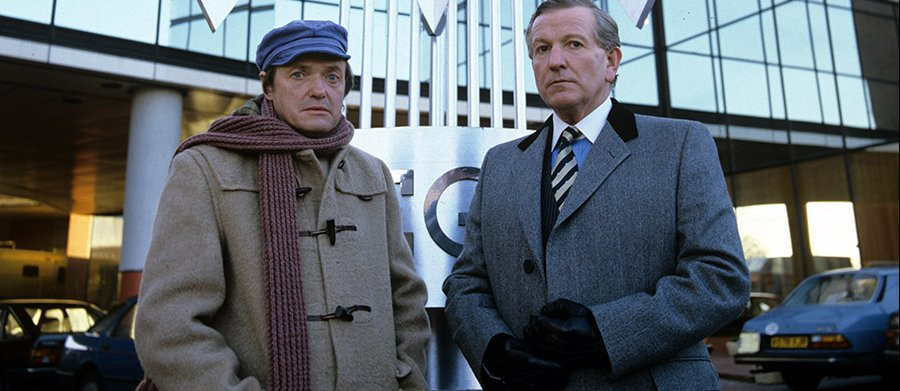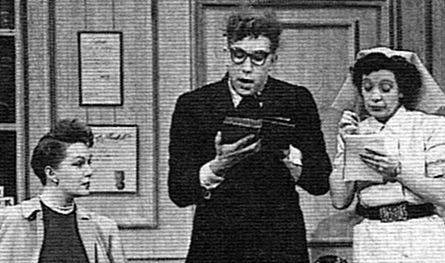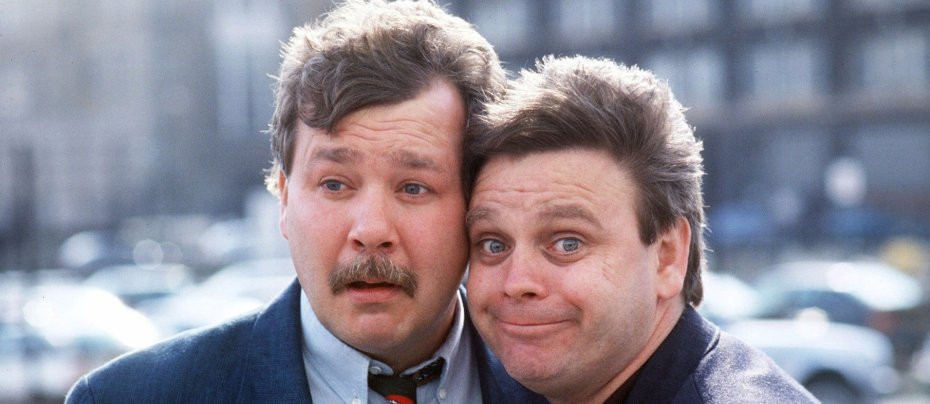
Hale and Pace
1986 - United Kingdom‘Hale and Pace’ divided audiences when in its prime and doubtless will continue to do so now
Review by Brian Slade
In the 1980s, there was a problem for television double acts. The bar had been set too high by Morecambe and Wise. Even with their later shows at Thames not being received with the same enthusiasm as all that went before, Eric and Ernie had worked their way into the British psyche with a standard of comedy and warmth not seen before or since.
Comedy pairings still achieved success in the three or four channel eras, most significantly the likes of Cannon & Ball and Little & Large, but they always faced the same harsh comparisons. But those two were very much still geared towards comfortable Saturday night light entertainment audiences. Elsewhere in the schedules, it was no easier. With a less populist approach, a later night-time slot and seemingly minimal reins on them, Gareth Hale and Norman Pace became as successful as they were criticised when they took over late Sunday evenings on ITV in 1988 with their self-titled sketch show, Hale and Pace.
Hale and Pace had been working together for many years before they finally got their big break at London Weekend Television. Meeting at college in the early 1970s, their partnership began at the Tramshed in Woolwich. It may not have been the hard graft of tours and working mens’ clubs that those before them had worked at, but they certainly had to work their way up to television stardom, going via radio sketches and occasional guest spots including appearing in the irreverent The Young Ones.
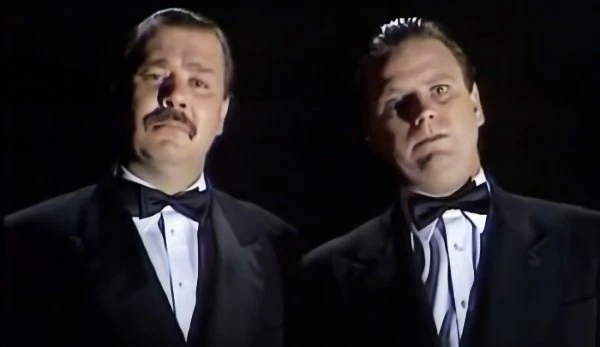
Amongst the best known of the creations on Hale and Pace were The Management, also known as The Two Rons. Bouncer-types decked in dickie-bows and dark suits, they were thug characters who had barely a brain cell between them, Gareth Hale’s Ron rarely bothering to use it. It was this pairing that emerged from the shadows of a dingey smouldering warehouse to announce that they had arrived at LWT. For subsequent shows, their presence, or a symbolic representation of them, would be an ever-present site when Hale and Pace were performing to a live studio audience.
The Management would become their most successful creations, dropping idiotic claims and threats on the most innocent of subjects, while demonstrating their absurd lack of intelligence in the process: ‘Ron – they’re tittering,’ – ‘I don’t like tittering – I don’t like any seaside towns.’

The other big success on Hale and Pace was the creation of Billy and Johnny. Dressed in garish dungarees, these two simpletons were seemingly presenting a children’s television show to kids somewhere in the Rainbow age bracket, with the same approach to its audience. Except of course, this was late Sunday evening, so no fluffy bunnies and glove puppets to be seen. Billy and Johnny were invariably discussing far more adult themes, like shopping in sex shops and tackling how to make babies. It was the kind of humour ideal for kids staying up on a Sunday night to laugh at on a Monday morning, and it even offered the opportunity to add another presenter pal – an early set of appearances for a young Ainsley Harriott as Willy!
The first episode of their opening series set the tone for what was to follow for the subsequent ten series. The Management and Billy and Johnny were accompanied by a great deal of musical numbers throughout the show’s tenure, and there were even spots where we seemingly see the fictionalised versions of Gareth and Norman sharing a flat. But the audience for Hale and Pace was not comfortable Saturday evening primetime, so there was a harsher edge. That very same opening episode saw the boys appear with a cute kitten climbing around their suits with only a microwave oven on the set with them. They admitted they wouldn’t dare to put a cat in a microwave on live television – and so they promptly produced one from the oven that they had seemingly zapped earlier.
With such sketches, it is no surprise that Hale and Pace divided public opinion. Viewing figures were good, critical reception was not. ITV stations already knew that late Sunday evening had room for edgier comic material, having provided a home for Spitting Image, so there was no concern about finding the right place for the show. And that first series saw Hale and Pace pick up the Silver Rose of Montreux. But for all the success, others found Hale and Pace to be at the very bottom of the comedy pile. Whether audiences and critics were convinced that double-acts should be restricted to creating warm and nostalgic comedy, with the power to entertain multiple generations at once, who knows? But for 10 series Hale and Pace ran at LWT until the boys decided to jump ship, a decision that proved a disaster.

Appearing on the BBC in the late 1990s just didn’t seem to fit the niche market that Hale and Pace had engineered at LWT. Their BBC efforts were an unmitigated disaster. Their Wednesday evening show, h&p@BBC, was described by the Independent as ‘toe-curlingly, mind-bogglingly awful’ and it seemed very few disagreed. Where at ITV critics could be ignored while the viewers were there, without an in-built audience at the BBC, they failed dismally. The pair continued to work together sporadically, but Norman Pace found himself drifting into stage work, although they did make a few cameo appearances together in the sunny sitcom Benidorm.
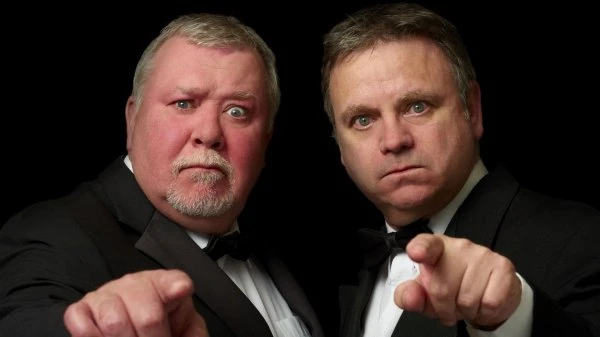
Hale and Pace divided audiences when in its prime and doubtless will continue to do so now. Nostalgia has a tendency to soften the edges of criticism and given the alarming dearth of decent sketch comedy from commercial stations in more recent times, perhaps in hindsight Hale and Pace doesn’t seem so bad. Or perhaps it was never that bad to begin with. Whatever your view, Hale and Pace was a little childish, very rude and outspoken but very successful and perhaps we just took it a little too seriously.
Seen this show? How do you rate it?
Seen this show? How do you rate it?
Published on September 3rd, 2023. Written by Brian Slade for Television Heaven.


